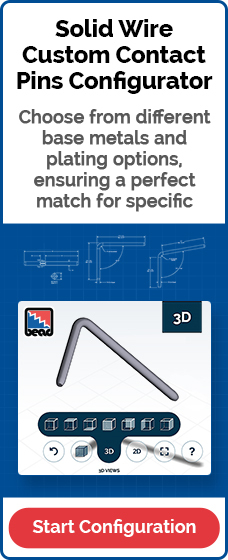Today, most workers use at least three separate devices to communicate. The ability to connect with anyone, anywhere, is essential to businesses in the modern era. When communication issues occur, it affects production, customer satisfaction, and so much more.
When communication issues occur, they may be caused by electronic or electrical connectors—hereinafter called electronic. If they are worn down or made in a less than ideal way, they can affect your ability to connect with the world around you.
Whether you're a manufacturer, a business owner, or someone who just wants to figure out why your device is not working right, this guide is for you.
Here's a rundown of what electronic connectors are and how they are used in communication applications.

What are Electronic Connectors?
Electronic connectors bridge the communication between blocked or isolated circuits. This allows a smooth flow between two active devices, so the circuit can better act on its function.
Electronic connectors come in a range of shapes and sizes. This allows them to fit a wide range of objects, frequencies, power levels, and settings. No matter what they are being used for, they are essential for a continuous, reliable current.
Parts of an Electronic Connector
The main parts of a connector consist of a contact, insulator, and shell if part of the connector.
Some types of connectors may also require accessories, which fall into one of two types. Installation accessories include parts such as screws, nuts, and spring rings. Structural accessories include parts like:
- Guiding pins
- Connection rings
- Cable clamps
- Strain reliefs
- Grommets & gaskets
The contact is the central part of the connector. It allows the electronic connection to be complete.
The insulator is the base or insert of a connector. Its purpose is to make sure contacts are properly placed aligned, and spaced. This ensures there is good insulation between contacts and between contacts and housing.
The material of an insulator or housing needs to be able to resist and withstand the voltage of a circuit. This will help encourage the connector's ease of processing.
The shell is the connector's exterior cover. It has a number of uses like:
- Protecting the built-in insulating mounting plate and pins from damage
- Aligning the plug and socket after mating & un-mating
- Securing the connector
The Importance of Electronic Connectors in Communication Applications
The rise of mobile devices has caused connectors to become more widespread. Because of this dependence, their ability to perform well and be reliable is highly important.
In both wired and wireless systems, they are essential for reliable signal transmissions.
Poor quality connectors can cause a number of problems.
Crosstalk between the contact pins of a connector may occur. They can also have the wrong delay time, which can have an impact if a device has timing requirements.
Wireless Communication
In the case of wireless communication, there are some extra considerations to keep in mind.
Effective wireless communication in the workplace requires reliable electrical connections. They must function well no matter the working environment and intensity of work during a service period.
To achieve this, a range of electronic connectors are required, such as:
- RF connectors
- Power connectors
- Backplane connectors
- Input and output connectors
- Printed circuit board connectors
- Wire crimp, insulation displacement (IDC), or solder
Reliable connectors are especially important for standardized interconnections. This allows the equipment of different companies to better connect with each other to meet the needs of a business or community.
There are a number of ways to ensure good wireless connectivity. However, most of them are only done on the manufacturing floor.
One way to do so is to ensure that the external features of the shell are easy to guide with guide pins, especially for insertion. It is also helpful to make sure that power supplies with high-power capacity have their own terminals.
A gold-plated contact can help improve wear resistance. A redundant contact interface, on the other hand, can boost reliability. By using differing pin heights, it helps ensure the order of signal and ground connection.

Performance Considerations of Electronic Connectors
There are three basic categories for how electronic connectors work.
Mechanical performance refers to insertion and extraction force. If the extraction force is too small, it will affect the reliability of a contact pin. The insertion and mechanical life of a connector are affected by the contacts:
- Structure
- Coating quality
- Accuracy of alignment
A connector's electrical performance includes its contact resistance, insulation resistance, and dielectric strength.
Contact resistance measures how resistant contacts are to current flow. It should be low and stable in electronic connectors.
Insulation resistance measures how well the insulation works between contacts and the contacts and shell.
Dielectric strength measures the ability of contacts to withstand the test voltage. Like insulation resistance, it measures between contacts or the contacts and shell.
The environmental performance involves a connector's ability to resist conditions like:
- Temperature
- Humidity
- Salt spray
- Vibrations
- Shock
There are several ways to protect connectors against this type of damage. This includes proper sealing, liquid immersion, and low air pressure.
Choosing Reliable Electric Connectors
The reliability of your communication system is only as good as your electronic connectors.
At Bead Electronics, we provide custom contact pins to fit the needs of a wide range of applications that work in aerospace and defense, communication, industrial, lighting, medical, automotive, and other industries.
With our unique swaging process, we can ensure consistent quality and precision when designing pins. This allows us to decrease the abrasion of mating surfaces and lower how much force is required for insertion.
Contact us today to learn more about our services and how our contact pins can benefit your business.



